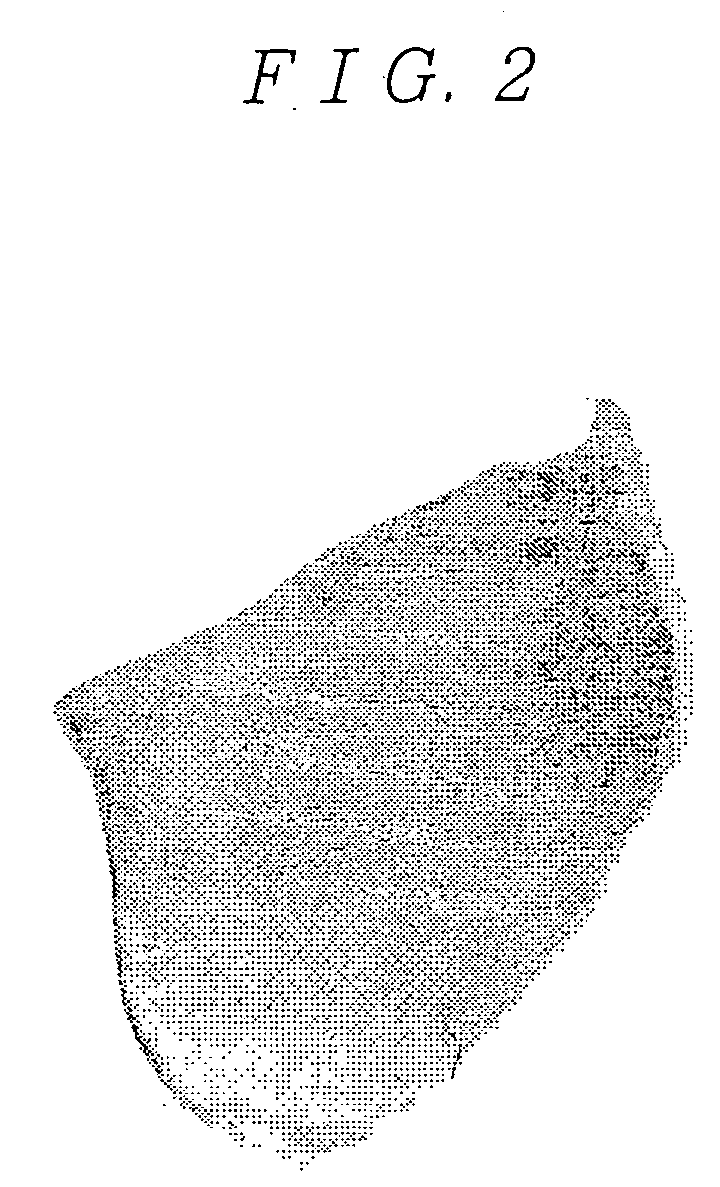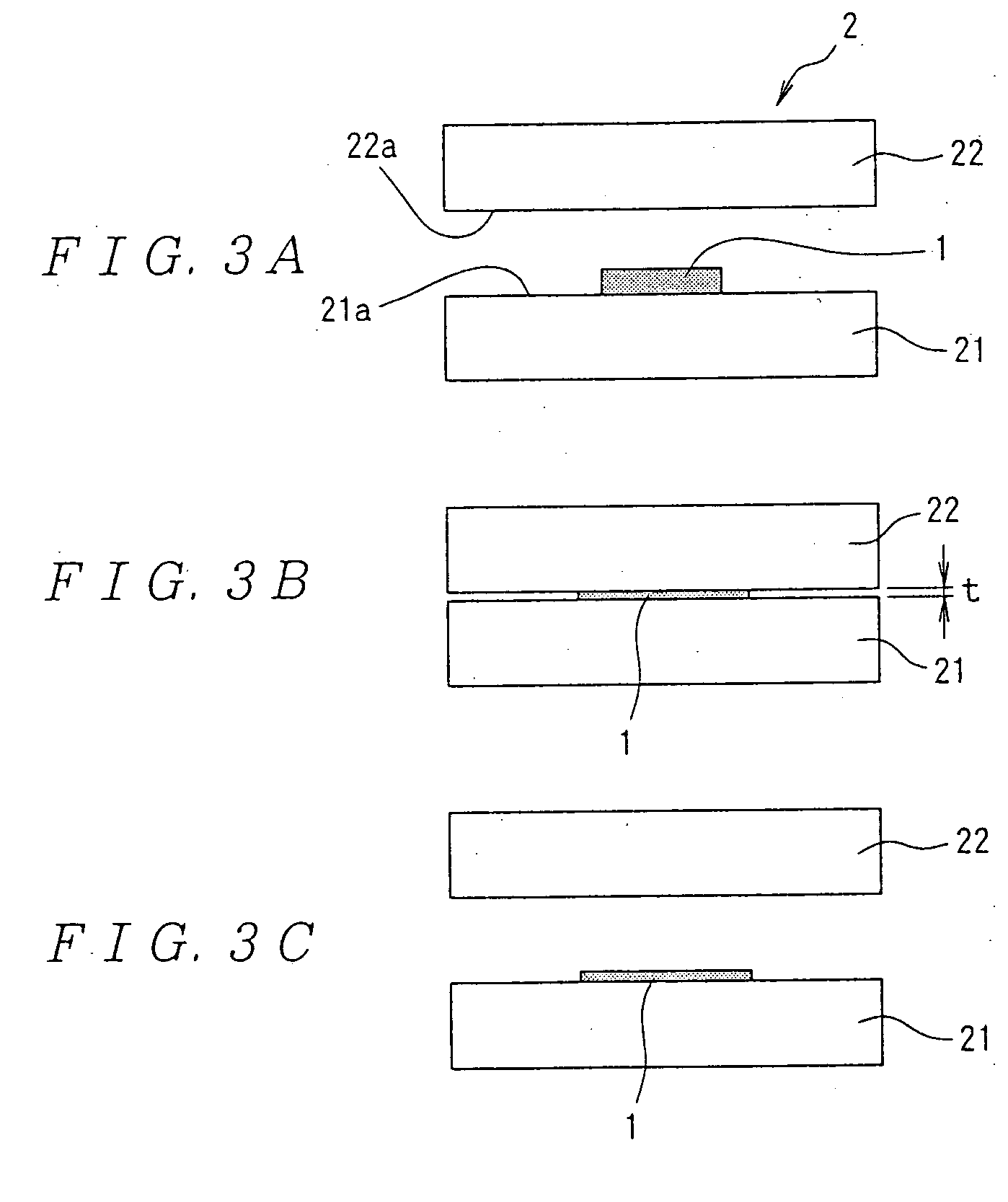Process for producing snack, snack and snack-like food
a technology for snacking and snacking, which is applied in the field of snacking, snacking and snacking food production, and can solve the problems of not finding a firm place in the market, potato chips are not regarded as good for health, and are difficult to produ
- Summary
- Abstract
- Description
- Claims
- Application Information
AI Technical Summary
Benefits of technology
Problems solved by technology
Method used
Image
Examples
first embodiment
[0054] (First Embodiment)
[0055] A method for producing a snack according to a first embodiment of the present invention will be described with reference to FIGS. 1A to 1E and 2. In this method, a slice cut out of bread with the brown-baked crust removed and in a thickness of not less than 1 mm is used as material and placed between a pair of flat pressurizing surfaces, and heated while a pressure is applied until the moisture content of the material decreases to a predetermined value less than the original moisture content of the material (a value not lower than 6.0 mass % and below the original moisture content of the material, for example), and after the heating, the material is dried without applying pressure. (By additionally carrying out this drying process, a processed product with the curled outer edges is obtained).
[0056] First, from bread available on the market (with a moisture content of about 35 mass %, for example), the whole of the brown-baked crust is removed with a ...
second embodiment
[0063] (Second Embodiment)
[0064] A method for producing a snack according to a second embodiment of the present invention will be described with reference to FIGS. 3A to 3C and 4. In this method, a slice cut out of bread as material with the brown-baked crust removed and in a thickness of not less than 1 mm is placed between a pair of flat pressurizing surfaces and heated under pressure until the moisture content decreases to a predetermined value (not more than 5.9 mass % for example) less than the original moisture content of the material.
[0065] To begin with, from bread available on the market (bread with a moisture content of about 35 mass %, for example), the whole brown-baked crust is removed with a slicer. Then, by cutting the bread with the slicer, a white (crustless) sliced bread with a size of 50 mm×30 mm×10 mm (thickness) is obtained.
[0066] Then, as shown in FIG. 3A, the bread 1 is heated under pressure by the press device 2. In the press device 2, a pair of flat pressu...
third embodiment
[0071] (Third Embodiment)
[0072] A method for producing a snack according to a third embodiment of the present invention will be described with reference to FIGS. 5A to 5D and 6. In this method, a slice cut out of bread with the brown-baked crust removed and in a thickness of not less than 1 mm is used as material and placed between a pair of curved pressurizing surfaces, and heated under pressure until the moisture content decreases to a predetermined value less than the original moisture content of the material (a value not less than 6.0 mass % and below the original moisture content of the material, and after the heating, the material is dried without applying pressure (further, a processed product with the curled outer edges is obtained by the above-mentioned drying process).
[0073] First, from bread available on the market (bread with a moisture content of about 35 mass % for example), the whole brown-baked crust is removed with a slicer. Then, the bread is cut with the slicer t...
PUM
 Login to View More
Login to View More Abstract
Description
Claims
Application Information
 Login to View More
Login to View More - R&D
- Intellectual Property
- Life Sciences
- Materials
- Tech Scout
- Unparalleled Data Quality
- Higher Quality Content
- 60% Fewer Hallucinations
Browse by: Latest US Patents, China's latest patents, Technical Efficacy Thesaurus, Application Domain, Technology Topic, Popular Technical Reports.
© 2025 PatSnap. All rights reserved.Legal|Privacy policy|Modern Slavery Act Transparency Statement|Sitemap|About US| Contact US: help@patsnap.com



